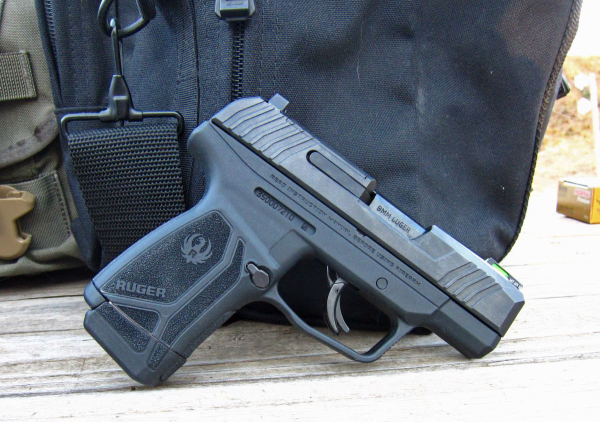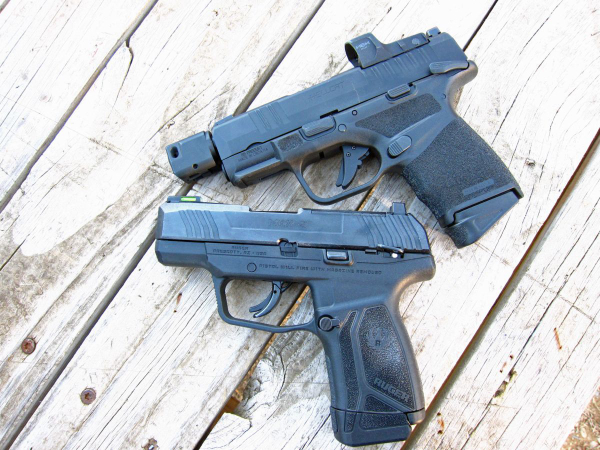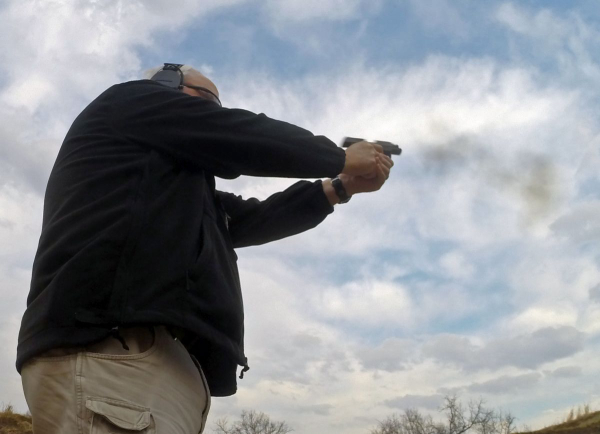
Ruger announced their new “micro-sized, striker-fired 9mm with 12 + 1 capacity” yesterday, the MAX-9. Like previous members of the space, it’s optics-ready; like some number of the “10+ tiny guns,” it has upgraded sights out of the box: tritium and fiber optic “day/night” front sight. Designed around the various small RDS optics -- J-point, Shield, Holosun 407k, 507k, SIG RomeoZero, Swampfox Sentinel, Crimson Trace 1500 and more – it seems like it’s a good fit in the current trend.
I was asked recently if the “compact service” 9mm pistols were obsolete in terms of use and sales; the answer is “no.” If you fire any of the tiny +capacity pistols for any length of time, you’ll know why the bigger guns get the nod … and it’s not 15+ capacity. In a class where you consume 200-500 rounds per day, you’ll get the idea.
As you move further back from the target into one of those “outlier” scenarios, you may find the larger pistols to be better choices. Based on recent developments, I believe that the little guns will be moving into that space even without optics.
As far as the ‘envelope,’ it’s got a ca. 3 ¼” barrel, almost 1” wide (at the most) and about 9” high – from the top of the larger rear sight to the bottom of the extended base pad 12-round magazine. They say it weighs 18.4 ounces – but with my scale and the extended, 12-round magazine (empty) it weighs just over 21 ounces.

The texturing is moderate; it would be comfortable to wear close to the skin but has enough friction that it doesn’t cry out for tape.
The striker, once the chamber is loaded, is cocked on this system which is somewhat analogous to the LC9s (no parts interchange). The new gun has a ‘striker blocker’ and a rotary sear like the one on the LC9s, which helps to keep things quiet until the trigger is pressed. The manual safety blocks the sear, the trigger bar and locks the slide. The blade in the midst of the wide, smooth trigger shoe, also blocks trigger movement. There is no magazine disconnector. The PRO model is available without the thumb safety.
The new gun is a nice handful of pistol with a wonderfully ergonomic frame. The trigger feels light (it’s not), an apparent function of the wide trigger shoe. If you ride the safety like on a 1911, you may not depress the trigger safety paddle reliably, tying up the gun. I have to use a more ‘revolveresque’ grip to ensure I hit the trigger shoe properly.
That may not be an issue for people whose hands differ from mine; it has been an issue for me. I believe using the safety during holstering, then taking it off could be the way to approach it.
Whereas the LC9 had a safety in the same location, it operated in the reverse of the 1911. MAX-9 has the proper pivot point to operate intuitively, just like a 1911.
The new gun is very easy to shoot, partly because of the size/form of the frame and the weight, slightly more than some other very small, up-capacity 9mm guns. I shot only HP ammo for the first outing, with no stoppages.
I found that the magazine is very easy to load.


On the second range trip, I sought to run the gun on a baseline, a short-form semi-qualification sort of course, explained in Shooting Wire here. I used the handiest range-type ammo I could get, the Monarch steel-case (with ‘laquer coating’ on the cartridge cases) 115gr. FMJ ammo from Academy Sports.
This is where a failure to hit the trigger-blade safety caused problems. I’d press off the safety, pull on a dead trigger, then quickly try to get the trigger moving, moving the gun at ignition.
That caused a missed head shot, low onto the body of the FBI-QIT 99, and four hits below the bold line of the shortened ‘bottle.’ If it’d been a full-size FBI-Q, they’d be hits … sort of.
I can say – having fired the ‘small’ expanded capacity guns at least a little – I find the MAX-9 to be the ‘most comfortable,’ only slightly edging the Hellcat RDP out. With the Hellcat, I didn’t miss the trigger safety – ever -- so it has that point. Either is about as “non-jarring” to shoot as the S&W M&P Shield and it’s far less in the jolt department than the GLOCK 43.
None of them will hurt you; it becomes a fatigue issue when you’re in a class trying to get through 200-500 rounds per day.
That will cause you to long for your GLOCK 19 … but the Ruger MAX-9 and Springfield Hellcat seem to have both cracked the code of a non-fatiguing light pistol. And that’s something.
Comparative Specifications – MAX-9 with Springfield Armory Hellcat RDP, GLOCK 19
|
Specification |
Ruger MAX-9 |
Springfield Hellcat RDP |
GLOCK 19 |
|
Barrel Length |
3.2” |
3.8” |
4.02” |
|
Width |
.95” slide |
1” |
1.26” |
|
Height (ext.mag) |
4.8” |
4.5” |
5.04” |
|
Weight (empty ext. mag) |
21.6 oz |
19.7 oz. |
23.63 oz. |
|
Standard capacity |
12 |
11 |
15 |
|
Front sight |
Fiber-optic, tritium |
Tritium, luminescent |
Varies |
(RDP-with supplied RDS)
As to shooting the steel-cased 9mm ammo through it, the MAX-9 didn’t seem to notice. It seemed fond of Hornady ammo loaded with the FTX bullets as well – Critical Defense and Critical Duty. Some old Federal Hydra-Shok ammo was likewise consumed. I’ve not yet tried it with Hornady American Gunner or ammo from other makers.
If it took to the Monarch laquer-coated steel case ammo, I imagine domestic ammo will be easily consumed in the little gun.
At the close of the monsoons, perhaps I can get this little gun out to the swamp to try for accuracy. Until then, the Ruger MAX-9 looks very promising.
-- Rich Grassi